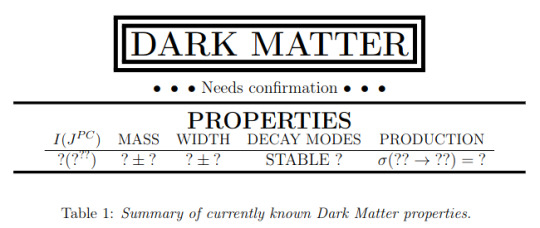he/him. adult. math, nitw, lotr, history, queer stuff, role-playing games, nordic larp, drag, graphic novels, cryptography.
Last active 3 hours ago
Don't wanna be here? Send us removal request.
Text
[An] unfortunate encounter with the police occurred when he lit up his pipe on the way out of a subway station. Morgenbesser protested to the officer who tried to stop him that the rules covered smoking in the station, not outside. The cop conceded he had a point, but said: "If I let you get away with it, I'd have to let everyone get away with it." To which Morgenbesser, in a famously misunderstood line, retorted: "Who do you think you are, Kant?" Hauled off to the precinct lock-up, Morgenbesser only won his freedom after a colleague showed up and explained the Categorical Imperative to the nonplussed boys in blue.
850 notes
·
View notes
Text
few understand just how many such cases there are
15K notes
·
View notes
Text
My mom has tick-borne encephalitis. She's a shell of herself at the moment.
This is a reminder that there is a vaccine (that she did get and still she's been sleeping about 18 hours a day for a week so far) and you should definitely get it if you live anywhere that's highlighted in red on this map and you go outside and/or have pets that go outside, because this virus is truly terrifying, trust me.

Source : Im, J. H., Baek, J. H., Durey, A., Kwon, H. Y., Chung, M. H., & Lee, J. S. (2020). Geographic distribution of Tick-borne encephalitis virus complex. Journal of vector borne diseases, 57(1), 14–22.
4K notes
·
View notes
Text

incredible table on the dark matter review paper
805 notes
·
View notes
Text
once you realize that the political ad cliche of "[opposing candidate] has never run a business... and yet they want to run a whole city???" is code for "people who aren't part of the bourgeoisie shouldn't be permitted to hold office" you never stop seeing it.
2K notes
·
View notes
Text
You can't just make public washrooms available to everyone. Access needs to be means tested.
How much have you eaten? How much have you drank? When was the last time you had access to a privately owned washroom? When will be the next time you have access to a privately owned washroom?
We need to know these things. Otherwise people will piss and shit in the public washrooms just for the fun of it. They'll spend all day doing it!
Is that what you want? People exploiting public services to pee for hours on end uninterrupted just because they can? Just like Mao's wife did in communist China?
1K notes
·
View notes
Text
There are two rooms A and B, both full of dicks bouncing around, and there is a demon at the door between them. If an erect penis from room A approaches the door, the demon lets it to fuck them, thus softening after coming, after which the demon lets it to pass it to another room. If an unerect penis from room B approaches, the demon gives it a quick tug to make it erect and lets it pass to room B. It does not let the penises pass the other way. This thought experiment was a paradox that kept physicists awake at night during the end of the 19th century, on one hand because it seemed to be a violation of the laws of thermodynamics, but mostly because it was just too hot.
The fundamental dichotomy of art blogs whose headers are like "ooh, watch out, this blog is NAUGHTY" and you have to scroll for minutes to see a nipple versus art blogs whose headers are like "sometimes NSFW" and the pinned post depicts a character doing something thermodynamically impossible with their penis.
12K notes
·
View notes
Text
you either die a mathematician or live long enough to see yourself become a computer scientist
631 notes
·
View notes
Video
THIS IS THE BEST THING I HAVE EVER SEEN
3M notes
·
View notes
Text
re: this post, highlighting JKR's antisemitic shirt rebranded with her own ip
a lot of the notes are acting like the original tweet is "stupid" for not connecting the dots that it's still antisemitic even though it's harry potter.
y'all. the original tweet is by Alison Rumfitt, an author in England who is a trans woman, and who notably writes horror revolving around contemporary fascism in the UK, often with extremely obvious references to JKR's political influence in said horror novels.
she knows. that's why she constructed the tweet that way. she is intentionally making it impossible for people to not connect the dots, while wording it in such a way to avoid prosecution from libel laws for calling a spade a spade.
give trans women a little credit, please. you are not smarter or better than her for having read her tweet and come to the conclusion she intended to communicate.
7K notes
·
View notes
Text
was reminded of that youtube channel that records footage of that bridge that scalps trucks today. one of the fascinating developments that's happened since i last heard about it is that, in one of their many attempts to stop the trucks from being can-opened, they installed a traffic light that detects when a vehicle that's over the allowed height is coming and turns red so the driver can stop and hopefully notice the signage all around that's screaming "YOUR VEHICLE IS OVERHEIGHT TURN AROUND" and avoid an accident. However as a result sometimes drivers see the light turning yellow and IMMEDIATELY start flooring it to avoid having to stop, ensuring that the roof of their truck just gets fucking annihilated instantly. Really beautiful stuff you should check it out
168K notes
·
View notes
Text
The divine right of kings but it's a curse
71K notes
·
View notes
Text




Vampire Hunter D | 吸血鬼ハンターD (1985) dir. Toyoo Ashida
12K notes
·
View notes

